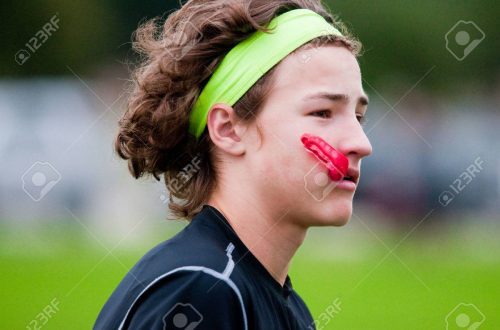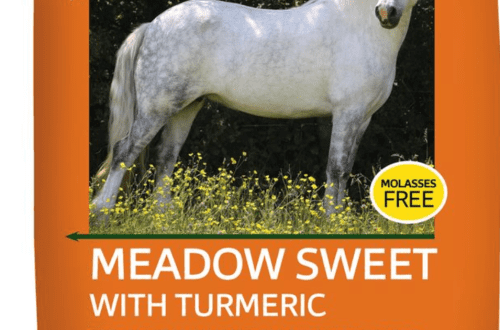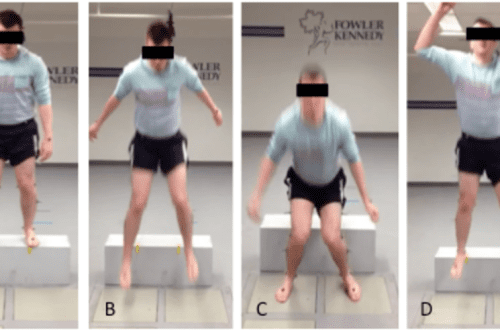
Spray training a horse
Getting used to the spray
Now there are a lot of useful things that are produced in the form of a spray: conditioners, repellents, wound care products and more. However, many horses are afraid of sprays, and this makes spraying very difficult. There is a very simple and effective way of accustoming to all sorts of pshikalka.
We need: free space (levada, parade ground, pasture, etc.), a halter, a cord, a spray bottle filled with water (after all, a horse does not understand the difference between water and air conditioning, so we will save money) and a container with water within reach (because you will have to fill the spray bottle not once or twice).
Principle exercises: habituation, i.e. puff until the horse stops and shows signs of relaxation.
Preliminary preparation
When accustoming a horse to “terrible things”, you need to remember that it is attentive and respectful, which is achieved by working in your hands. Before starting training exercises, it is necessary that the horse respects your personal space – the “bubble” – and leaves it at the first hint. In this case, you have a guarantee that the horse will not run through you, frightened of the rope / stick / bag / puff, etc.
Naturally, before the start of accustoming to the “terrible object”, the horse should already let off steam, if any. In some cases, it is better to start classes altogether after riding.
For prevention (and most importantly: for the horse to understand the principle), you need to start with accustoming to the rope: throwing a cord or lead on any part of the body.
Rope training
I stand at shoulder level, slightly to the side at 45 degrees to the horse. For example, I stood at the left side of the horse. It turns out that I will look at the withers on the left. In my left hand I hold a lead (not right next to the carbine, but 30-40 centimeters from it), in my right hand – the tail of the lead, which I will throw at the horse. Excess lead can be rolled into a large ring and also held with your left hand. The distance from me to the horse should be such that I can touch his shoulder with my left hand.
The left hand should be held high – at eye level, if the horse suddenly decides to flee and rush at you, it will be very easy to drive it away by making a few strokes of the brush towards its eyes. If the horse decides to run forward, with the left hand we return it to its former – safe – position “under 45”, picking up and releasing the lead rope. Remember, the horse must look at you with at least one eye.
You need to determine the starting point, that action that causes a reaction, but does not bring the horse to hysterics. With some horses you can start with a very long tail, with others you will have to start with a dozen centimeters long tail.
We begin to throw the rope – first at the withers-back, it’s easier. Chombur must be thrown with a constant rhythm, energetically: thrown, pulled to the ground, thrown again, pulled off again, there must be a clear rhythm.
At first, the horse may begin to walk forward or backward, try to run in a circle, lift his head. No need to pay attention to it, just keep throwing the rope, controlling the “under 45” position, turning the horse’s head towards you, and also moving with it, stopping any attempts to ram the bubble. In no case should you stop the horse or stop throwing the rope, try to calm it down. The decision to stop must come entirely from her. It is possible that the first few times the horse will walk for 5 minutes, and 10, but eventually it will stop. And it should be her choice. Self-stopping after 10 minutes of walking is much more effective than stopping on command at 1 minute of exercise. Horses remember the lesson best when they believe the idea came from them.
So, no matter what, you need to stay in the same position at 45 degrees. And keep doing your dirty work!
If the horse still runs away, showing obvious panic, without interrupting the exercise, shorten the rope being thrown, it is quite possible that the starting point was chosen incorrectly.
When the horse stops and begins to show signs of relaxation – lowers his head, begins to lick, mumble his lips, or at least just relaxes them – make a few more “control” throws, then scratch the horse with a rope on the withers. After a few seconds, start the exercise again.
Gradually move from the withers to the croup, then to the neck, head, then to the legs: the horse should react calmly to the throwing of the rope on any part of the body. It is very important to train the lead on both sides, and don’t be surprised if a horse used to throwing the rope on the right side panics about the rope on the left side – this is a completely normal reaction. When moving to the other side, you need to start from the very beginning – from the starting point, and not think about the fact that “she is used to the right, and the left should already be familiar.”
Pshikalka training
When the horse understands the principle “the rope is not scary and if I stand and are relaxed, then you will stop throwing it” – we move on to another. You can go straight to the pshikalka.
In general, it is better to start spray training in the summer, in warm weather, because the horse will be wet from head to toe by the end of the session. If you teach it in winter, then you can first without water – especially for those horses who do not like the sound itself. However, it’s not the sound that bothers most horses, but the feeling on their skin when water hits it. So the best option in our climate is summer and sun.
Having first checked whether the horse faints from the very sound of the puff (if it does, our starting point is the sound, the first stage is completed, the relaxed horse, not paying attention to the sound of the pshikalka) – we proceed to water procedures. We draw water into the pshikalka: the horse does not know that this is a repellent, this is an air conditioner, but this is water. But we know that water is free. It is better to take a larger sprayer so that it does not happen that the water runs out before the horse calms down.
Again you get up in the same way: in your left hand is a lead rope, in your right – puffy fear. Determine your starting point. Some horses that are especially difficult to spray won’t freak out as much if you puff away from your outstretched arm and down. Many horses can be started to be fluffed by irrigating the shoulder or withers. Have you decided on a starting point? Start puffing.
The horse, of course, will make round eyes and apparently try to escape. But despite this, you need to continue to rhythmically “puff out” water on the horse’s body (either to the floor or to the side), correcting the head with your left hand. As soon as there are hints of a lowered head (albeit not to the level of the withers, but a couple of centimes) and licking – make a “control puff” and stop, put the spray aside, stroke the horse.
Take a break and start again. Gradually, the horse will begin to indifferently endure the spraying of the shoulder, then start spraying on the back, neck, croup, legs, stomach, groin. The principle is the same – do not move to another area of the body until you understand this, and do not stop spraying until the horse 1) stops and 2) relaxes.
Naturally, all this must be done on both sides – with a rope, and with a pshikalka, with anything. But you can switch to the other side only after the first one has been worked out perfectly. By the way, each horse has some “harder” side – next time you need to spend more time on it than on the “simple” one.
When the horse begins to calmly treat pshikalka, splashing on any part of the body, you can move on to the head. Of course, neither conditioners nor repellents can be sprayed directly on the head (for this you need to spray on your hand or on a sponge and wipe the horse’s head), but as a training it is very useful.
The scheme of action here is slightly different. Splashing on the head, you need to move away from the horse, beckoning it to follow you. So training will go faster, because when a person goes to a horse with a terrible object, she has more opportunities and reasons to escape. If you leave her with this object, then it turns out that she drives it away, and besides, horses often want to reach out to what they are not given.
Walk and puff until the horse shows interest and reaches for the puff. She will act relaxed and calm, keeping her head lower than before. Now stop for a breather and then continue spraying on the horse’s head. In the photo on the left, the Star at the end of classes just started drinking from a pshikalka 🙂
Towards the end of the session, puff on the horse again, watching his reaction.
And such exercises with a rope, a pshikalka and other horror stories need to be repeated every day. And over time, the horse will not care when it is splashed, when a rope suddenly falls on it, a package flies up next to it, etc. It takes little time, but it brings a lot of benefits, besides, at the same time the horse will learn to think first, and then run away, or rather NOT run away.
So, main conditions:
1) do not hold him directly at the halter or by him (so the horse is uncomfortable, and the person himself forces him to violate his space); 2) it is better to do this in an open place – so that there is an “appearance of freedom”, because horses are not only cowards by nature, they also panic when it seems to them that they are in a trap; well, and 3) you need to find a starting point – where he already reacts to the “terrible”, but still does not fall into hysterics. And most importantly, perhaps: do not stop before the horse relaxes. Otherwise, he will only learn that “in order for the pshikalka to be silent, I need to portray a tantrum and dump”
Tip: accustom the horse to as many things as possible. If the horse has a very difficult attitude towards spray (bad past experiences, years of coaxing and running spraying, etc.) it is best to spend some time and work on accustoming the horse to a lot of suspicious things first. The steps will be the same the more things the horse learns and accepts, understanding the principle of the exercise, the calmer he will then react to the spray. Teach her to rope, stick, bags, umbrellas, flags and other “terrible things”. Each time the horse will be more relaxed about all the innovations and it will take less and less time for it to get up relaxed. Even if the horse is already accustomed to everything, not stressed about new things, the habituation exercises should still be repeated every day several times – the more the better.
Field notes: if you haven’t sprayed for a while (and this can happen, for example, in winter), the horse may forget last year’s classes to one degree or another. Ideally, you can refresh your memories throughout the year – except perhaps in the winter to puff “idle” – without water, air conditioning, repellent, etc. You should not expect complete relaxation from a horse that “well learned last summer!”. If after a long break (although sometimes 2-3 weeks are enough) or just suddenly, although “yesterday they were still splashing, and she was sleeping!” the horse reacts inadequately to the pshikalka, do not be surprised, do not strain about this – just drop everything and here and now devote time to “refreshing memories”.
Natalia Gerasimova (Olmek).
The material is posted with the permission of the copyright holder (RideWest.ru)





